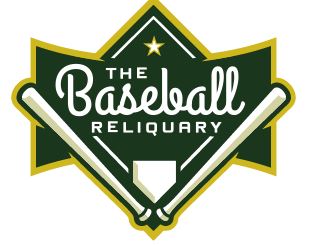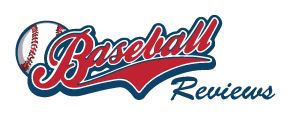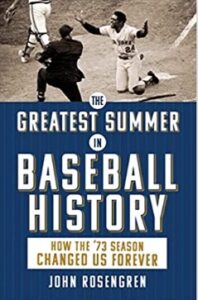 The Greatest Summer in Baseball History: How the ’73 Season Changed Us Forever
The Greatest Summer in Baseball History: How the ’73 Season Changed Us Forever
By John Rosengren
Sourcebooks, Naperville, IL
$16.99
(To be released April 1, 2023 … May be pre-ordered at indiebound.org and amazon.com)
In 1973, Major League Baseball appeared to be at a crossroads. The game was facing the blowback from 1972’s first-ever players’ strike; the balance of power between players and owners had changed dramatically; the American League had adopted a controversial rule change (the Designated Hitter); racial animus was coming to the forefront as Henry Aaron closed in on the iconic Babe Ruth’s career home run record; Reggie Jackson was redefining the image of the baseball superstar; and George Steinbrenner and Charlie Finley were breaking the norms as baseball owners. Forbes Magazine, in fact, predicted major league baseball “could well vanish from the scene in twenty years.”
In The Greatest Summer in Baseball History: How the ’73 Season Changed Us Forever, award-winning author John Rosengren gives readers a vivid picture of the forces and individuals that helped redefine baseball in 1973 – putting the game on a new, more colorful (and, at times. more controversial) path.
In his well-researched and well-written book, Rosengren provides the expected descriptions of the on-field action in pennant races, post-season games and record-chasing endeavors. He also takes readers behind the scenes (into the dugouts, clubhouses and executive offices), examining the personalities who were reshaping the game. He also ties the course of the baseball season with the events of the times (like the Watergate Scandal, the withdrawal from Vietnam, the Billy Jean King/Bobby Riggs Battle of the Sexes and George Steinbrenner’s legal troubles.
Rosengren tells the tale of the 1973 MLB season without pulling any punches. For example, he details how a resurgent Orlando Cepeda successfully put his mark on the Designated Hitter position, as well as how a declining Willie Mays struggled through his final MLB season (with the Mets). When recounting Reggie Jackson’s 1973 season, Rosengren reports that Reggie Jackson led the American League in home runs, RBI and game-winning hits, but also notes that Jackson was a new kind of superstar, one who played for the ego and the money.
With his usual thoroughness, Rosengren traces the development of Jackson’s ego all the way from his high school days (football scholarship offers from 48 colleges) until his trade to the Yankees, when he announced “I did not come to New York to be a star, I brought my star with me.” As he describes Jackson’s approach to stardom – often irritating and even offensive to many (even his teammates) – Rosengren notes that Jackson also added a new level of excitement to the game.
“Jackie Robinson changed the color of the game; Reggie infused it with color. He broke the duller barrier.”
The Greatest Summer in Baseball History
Baseball Roundtable Note: “The Greatest Summer in Baseball History: How the ’73 Season Changed Us Forever” was first published in 2008 under the title “Hammerin’ Hank, George Almighty and the Say Hey Kid: The Year that Baseball Changed Forever.” The book is being re-released this year, the 50th anniversary of the 1973 season.
Without giving too much away, let’s take a look at a few examples of how Rosengren approaches the stories of the 1973 season. We’ll start with Hank Aaron’s 1973 season, unfolding as he approached the iconic Babe Ruth’s hallowed 714 career home runs (Aaron would close 1973 with 713 regular-season long balls). Rosengren details Aaron’s on-field accomplishments, as well as the stress of the pursuit and the mountain of racially-based threats against not just Aaron himself, but also his family.
“It (the pursuit of Ruth’s record) should have been the most enjoyable time of my life, and instead it was hell.”
Hank Aaron, noted in The Greatest Summer in Baseball History
What intrigued me was that Aaron was nearly as disturbed by Atlanta’s indifference to his pursuit of the record as he was by the race-based hate mail. For example, on Hank Aaron Poster Day at Atlanta Stadium (April 29, 1973) – when the Braves planned to give out posters to the first 20,000 youngsters – a total of only 12,152 (youngsters and adults) were reported in attendance. After the game, Aaron commented that “Atlanta overwhelmed me with its indifference.” Later in the season, when Aaron popped his 711th round tripper (September 17), only 1,362 fans showed up in Atlanta. “That was a pretty strong statement of what Atlanta though of me and my record,” Aaron observed.
There were, of course, positive moments – and Rosengren shares those as well. On August 6, “Hank Aaron Day” was held in the former home of the Braves, as Aaron’s Atlanta squad took on the Brewers in an exhibition game in Milwaukee. There, Aaron basked in an extended standing ovation from more than 33,000 fans. There was a similar response at the 1973 All Star Game and Atlanta fans did come around, putting 40,000 plus in the seats (and out of their seats for a five-minute standing ovation) for Atlanta’s final home game of the season.
The point here is that – as with other topics in the book – Rosengren enables us to relive the significant events of 1973, the good and the bad. And, he does it with detail and accuracy, as well as with entertaining and active prose.
Rosengren also gives readers a look at the Mets, who made won the NL East title and made it to the World Series, despite being in last place on August 30 and not topping .500 to stay until September 22.-
“Excitement for the Mets in New York seemed directly proportional to disgust for the Nixon Administration.”
The Greatest Summer in Baseball History
Rosengren shares a game-by-game account of the of the 1973 Mets/Reds NL Championship Series – identifying the heroes and the goats. Part of the tale that particularly grabbed me took place in Game Two. In the fifth inning of that contest – with the Reds up 9-3 – Pete Rose (breaking up a double play) took out Mets’ shortstop Buddy Harrelson. The action resulted in a bench-clearing brawl. It was not your usual push-and-shove in-field match, but one marked by some pretty heavy punches. (Rosengren includes a blow-by-blow account, including Reds’ pitcher Pedro Borbon’s taking a bite out of a Mets player’s cap.) Once the field was cleared, the excitement was far from over. When Rose took his place in left field the next inning, the fans greeted him with what Rosengren terms ”a barrage of insults and an artillery of garbage.” It took more than ten minutes and a visit to the outfield by peacekeeper Willie Mays to quiet the crowd.
“I’m no damn little girl out there. I’m supposed to give the fans their money’s worth and try to bust up double plays – and shortstops. I’ll be honest, I was trying to knock him into left field.”
Pete Rose, after his NLCS collision with Bud Harrelson
Rosengren tells the story of the 1973 World Champions A’s and the deep rift between the players and owner Charlie Finley. A rift so deep that, at one point, the A’s players discussed going on strike during the 1973 World Series. Rosengren shares the story of Reggie Jackson flipping the bird at owner Charlie Finely after delivering a pinch-hit home run and gives readers a look at Finley – defying post-heart attack doctors’ orders – and continuing his meddling ways from a wheelchair (with a bottle of yellow heart pills in his pocket).
And, there’s much more in the book, including (but, as they say, not limited to):
- Orlando Cepeda overcoming gimpy knees to be named 1973’s first-ever Outstanding Designated Hitter of the Year;
- The rift(s) between, Hank Aaron and Baseball Commissioner Bowie Kuhn; Willie Mays and Mets’ skipper Yogi Berra; George Steinbrenner and the Federal Court system;
- The forces behind, skepticism surrounding and impact of the Designated Hitter rule;
- George Steinbrenner’s zealous efforts to prove Gaylord Perry was throwing spitballs;
- Willie Mays’ moments of struggle and moments of glory in his final season.
Ultimately, The Greatest Summer in Baseball History is a highly informative and entertaining look at a watershed year for baseball. If you’re a baseball fan, you’ll enjoy the action and John Rosengren’s take on the people, events and social forces that shaped the season and the future course of the National Pastime.
____________________________________________________
About the Author
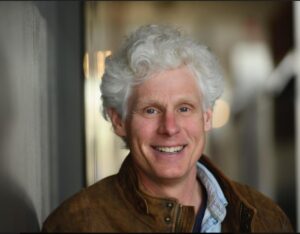 John Rosengren is an award-winning journalist and author, whose articles have appeared in more than 100 publications, ranging from The Atlantic to Sports Illustrated. He is a lifelong baseball fan and a member of the Society for American Baseball Research.
John Rosengren is an award-winning journalist and author, whose articles have appeared in more than 100 publications, ranging from The Atlantic to Sports Illustrated. He is a lifelong baseball fan and a member of the Society for American Baseball Research.
He has written ten books including:
The Fight of Their Lives: How Juan Marichal and John Roseboro Turned Baseball’s Ugliest Brawl into a Story of Forgiveness and Redemption
Hank Greenberg: The Hero of Heroes
Classic Baseball: Timeless Tales, Immortal Moments
Blades of Gory: The Story of a Young Team Bred to Win
Alone in the Trenches: My Life as a Gay Man in the NFL. (With Esera Tuaolo)
Life is Just a Party (short story collection)
Clean Heart (Novel)
Rosengren is a Pulitzer Prize nominee. Among his many awards is the 2017 Donald Robinson Award for Investigative Journalism.
___________________________________
A Brief Interview with the Author
Roundtable: When did you first develop your passion for baseball?
Rosengren: I fell in love with baseball as a young boy. My father took me to Twins games at Met Stadium and passed along his love for the game through his stories and explanations of how the game was played. That love grew with my collection of Topps baseball cards, which I still have tucked into a few shoe boxes in my basement.
Roundtable: Did you ever play organized ball … from Little League on?
Rosengren: I started playing T-ball in as a six-year-old and continued playing until my junior year of high school when I was an outfielder on the JV team. I returned to the game in my 40’s, playing catcher and outfield for the Richfield Rockets in the 35-over wooden bat Federal League.
Roundtable: What spurred you to delve so deeply in the 1973 season?
Rosengren: I wanted to write a book that chronicled a season and figured the ’73 season, with all of the events that happened that year, was one of the most formative years in the history of the game. It also happened to be a significant year in the history of our country, so 1973 was a rich subject. It helped that I remembered the season fondly from my youth, because that increased my interest in learning more about it.
Roundtable: How long did the research for The Greatest Summer take and were there any specific challenges to getting the full picture?
Rosengren: I spent about two years researching the season until I got to the point where I felt I could tell its story with authority.
Roundtable: Is there a specific goal or philosophy you bring to your efforts when putting together a book?
Rosengren: I want to be able to tell a story in a compelling way and to write about substantial subjects. The racial injustice exposed by the opposition Hank Aaron faced in his pursuit of Ruth’s career home run mark is an example of the gravitas that makes this more than simply “a baseball book.”
Baseball Roundtable – Blogging Baseball Since 2012.
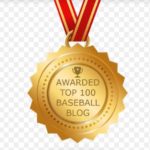
 Baseball Roundtable is on the Feedspot list of the Top 100 Baseball Blogs. To see the full list, click here.
Baseball Roundtable is on the Feedspot list of the Top 100 Baseball Blogs. To see the full list, click here.
Baseball Roundtable is also on the Anytime Baseball Supply Top 66 Baseball Sites list. For the full list, click here.
I tweet (on X) baseball @DavidBaseballRT
Follow Baseball Roundtable’s Facebook Page here. More baseball commentary; blog post notifications.
Member: Society for American Baseball Research (SABR); Negro Leagues Baseball Museum; The Baseball Reliquary.


